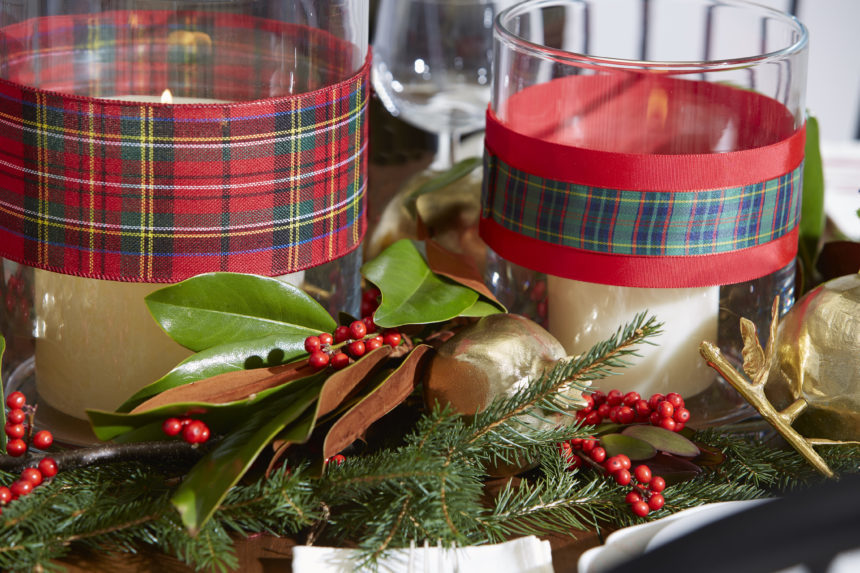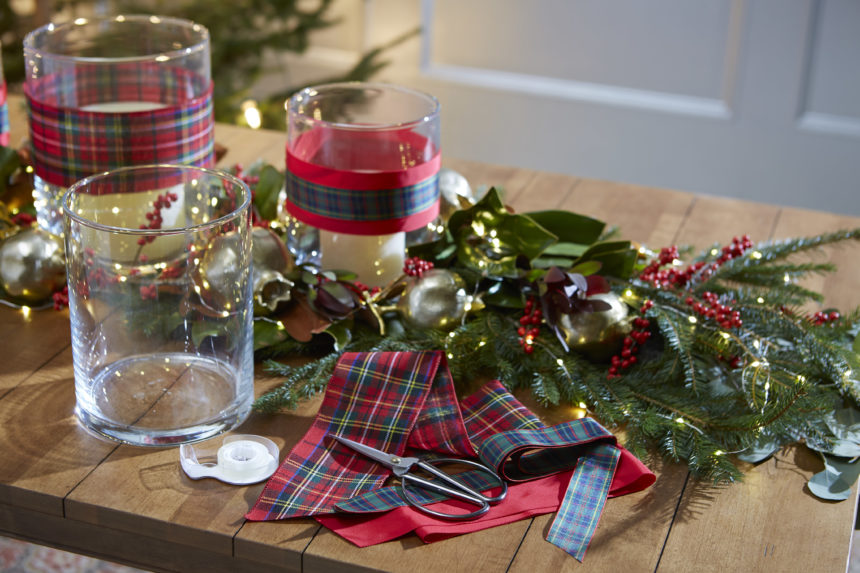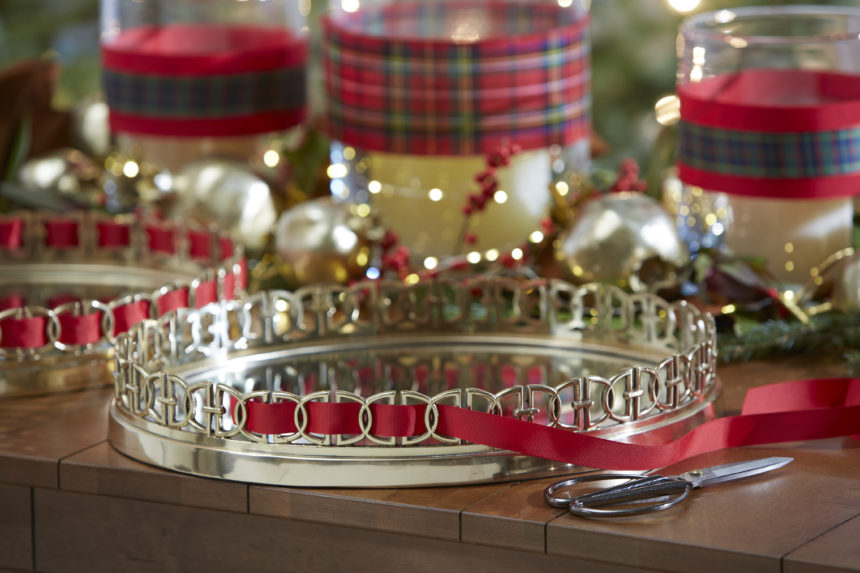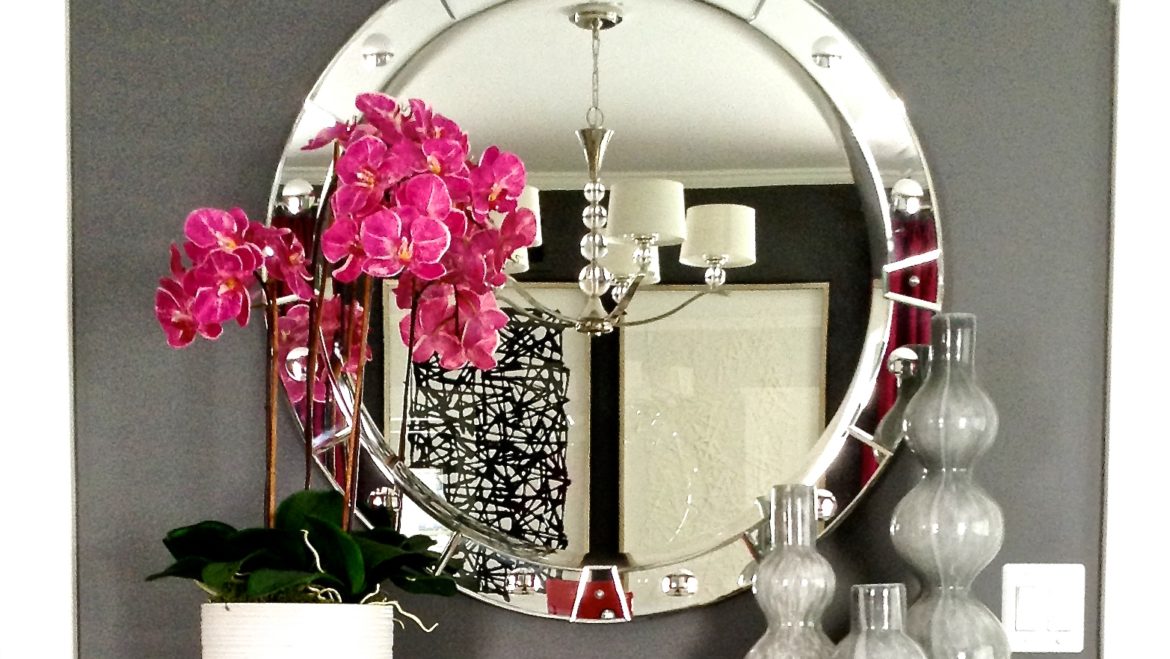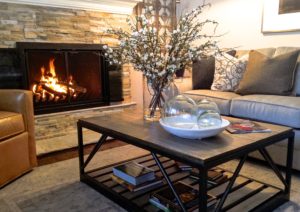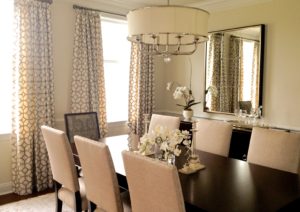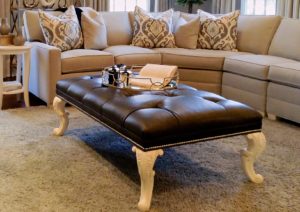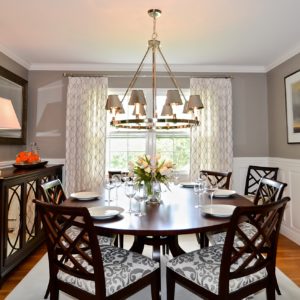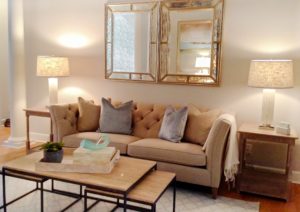How to Style a Mantel for the Holidays
If you have a fireplace—working or not—and it has a mantel, you’ve hit the holiday decorating jackpot. A mantel, or mantelpiece (or chimneypiece in England), is by definition a shelf—but it really is so much more. It’s prime real estate in any room: an instant focal point, an opportunity not to be missed.
Often, the architectural style of a mantel (and surrounding millwork) dictates how you decorate it—but not now. From candles and crystal to cherished collectibles, anything goes during the holidays.
Mantel decorating “rules” still apply:
- Choose a center of attention.
- Design with odd numbers.
- Keep scale and balance in mind.
- Add depth by layering.
- Stick with your theme.
Following these principles, we styled our own holiday mantel to show you how it’s done. Let us take you through it, step by step.
- Focus! Center a large mirror or work of art on the mantel and lean it close to the wall. For our spectacular statement piece, we chose our Aged Silver Provincial mirror; it always sets an elegant mood.
- Go green. Place natural evergreen garland along the length of the mantel, dangling some over the sides for a lush look. Drape greenery on your mirror or artwork, too—for dramatic effect.

- Add a little color. We chose sprigs of red winterberries.
- Go glam with a few metal accents. Our lovely Pomegranates (available in gold, brass, or nickel finishes) and ever-popular Song Birds add some shimmer.
- See the light. Amp up the ambience with candles in hurricanes wrapped in red ribbon. DIY tutorial: A RIBBON RUNS THROUGH IT
- Turn on the sparkle! We finished our mantelscape with mini battery-powered LED lights.
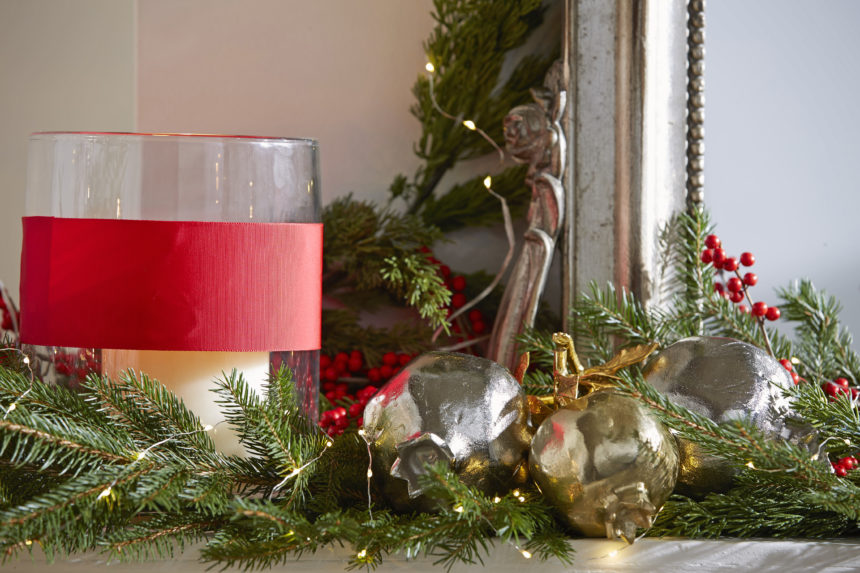
No mantel? No worries! Try this on any long-ish horizontal surface: a buffet, a console table, or the top of a bookcase or china cabinet.


